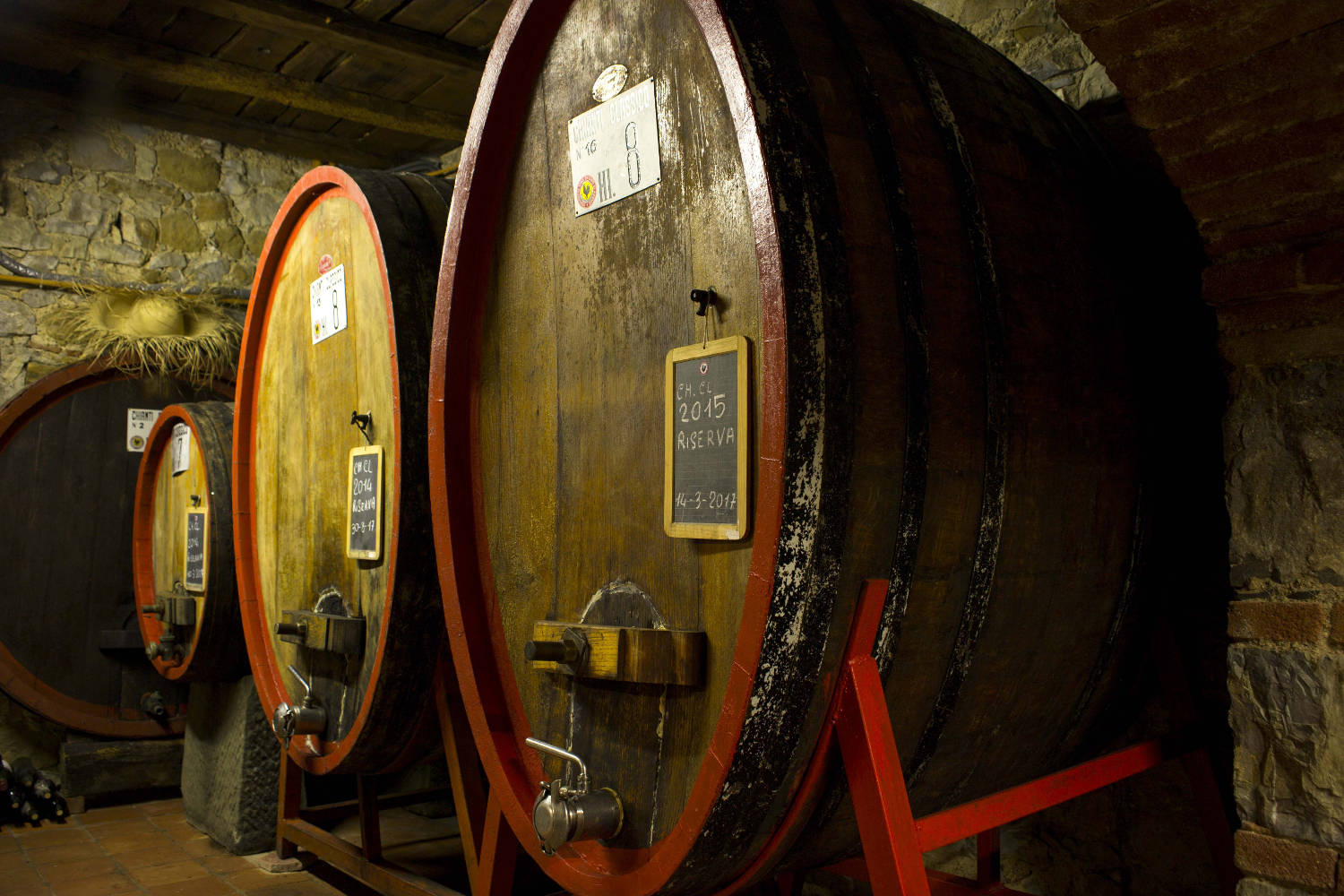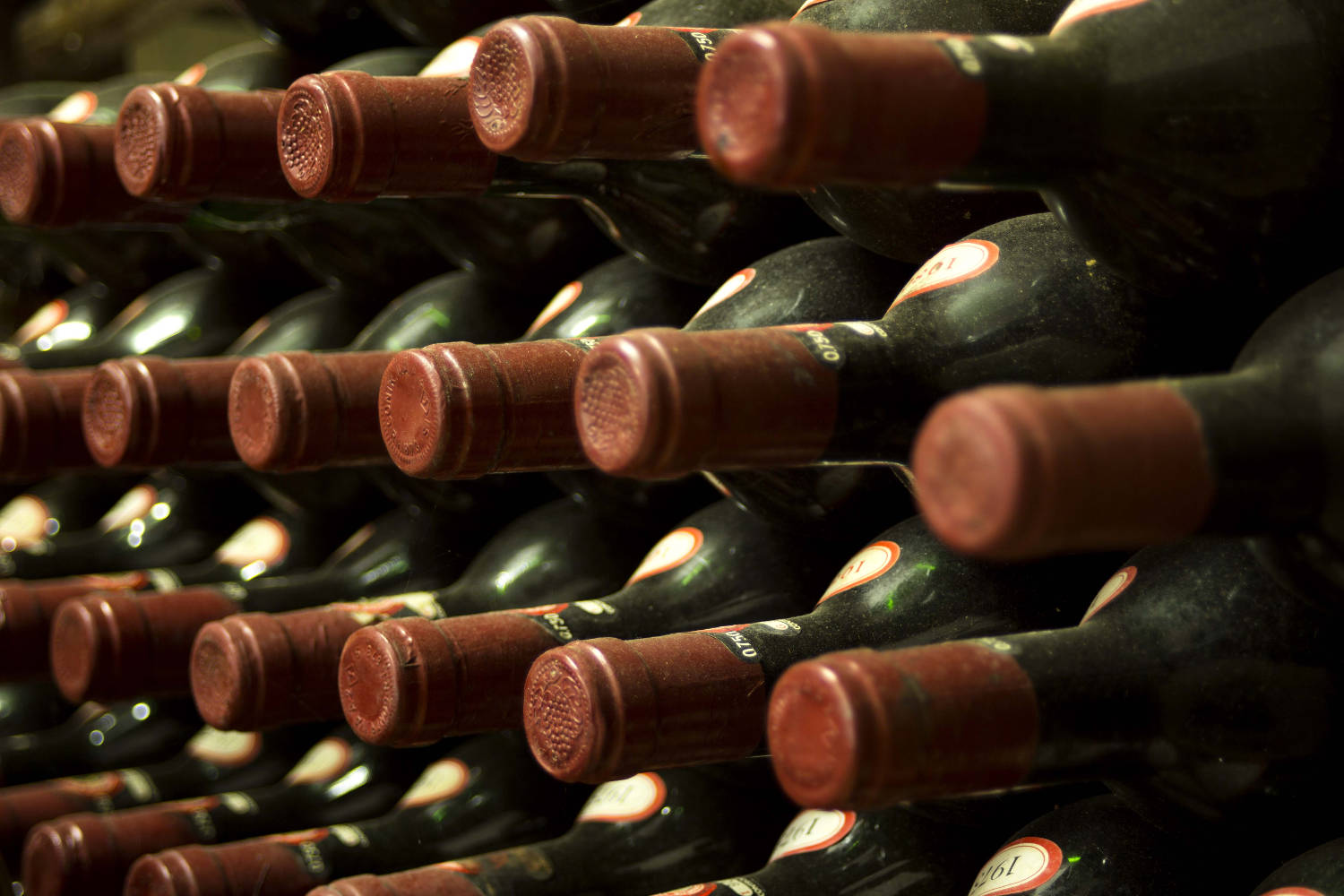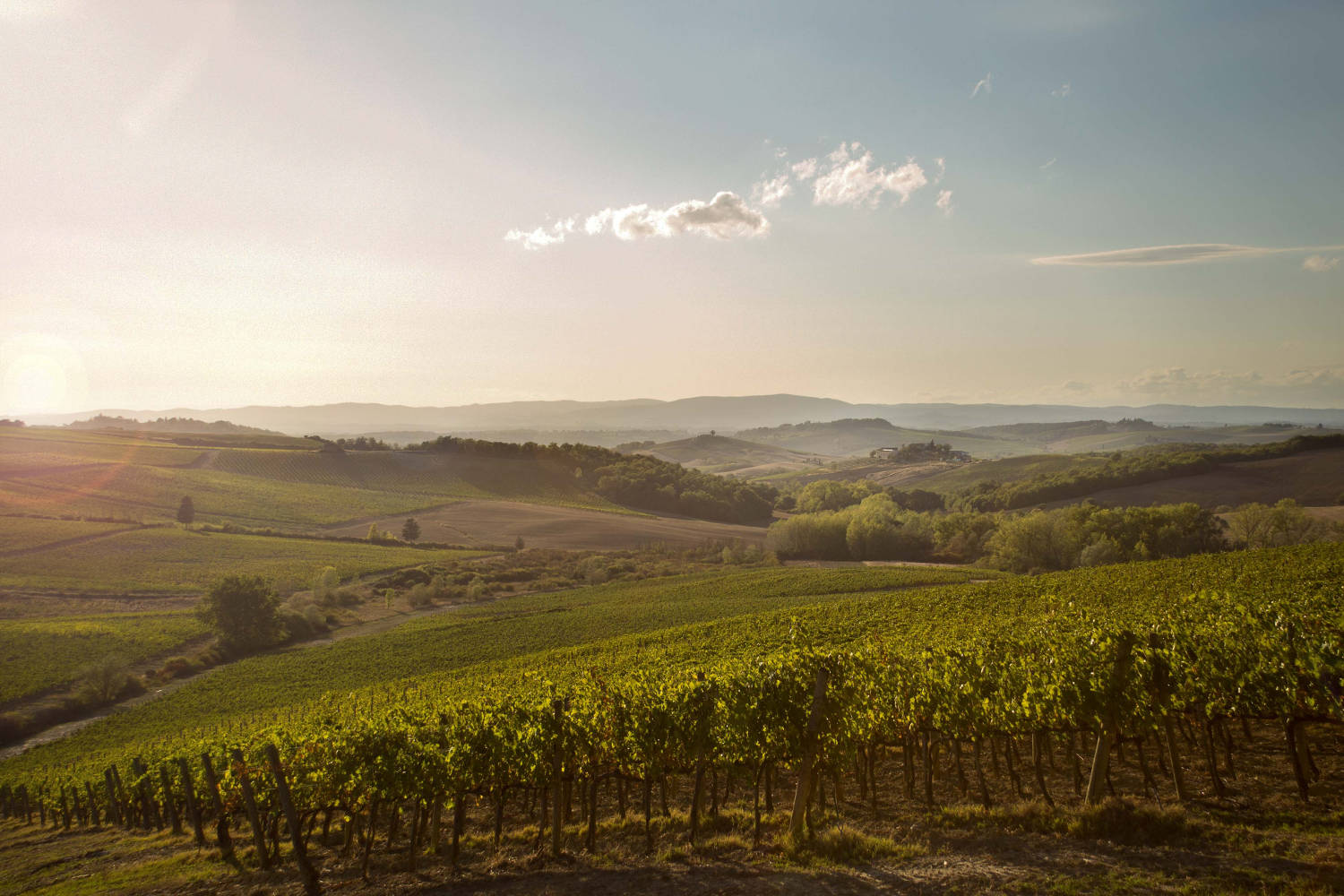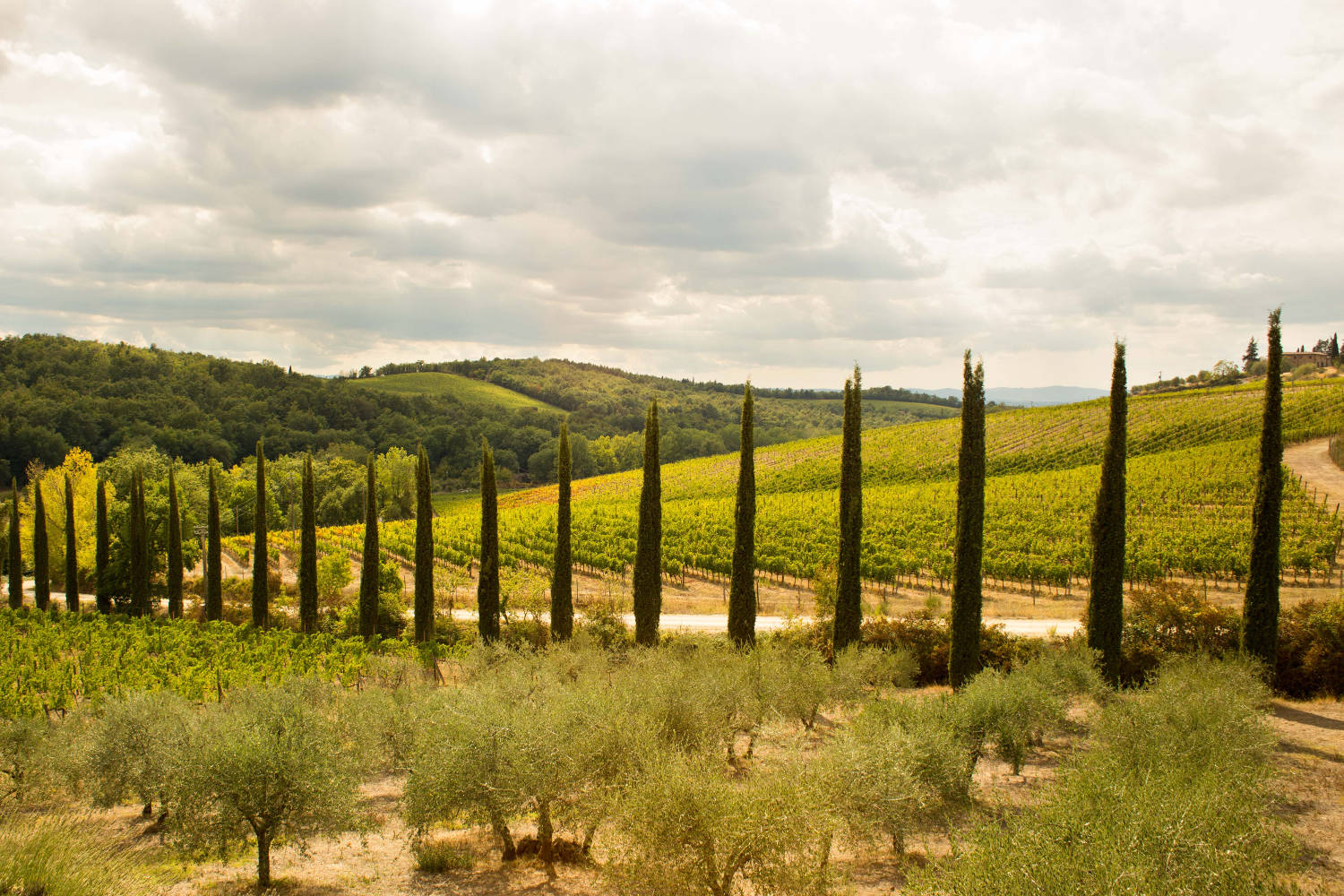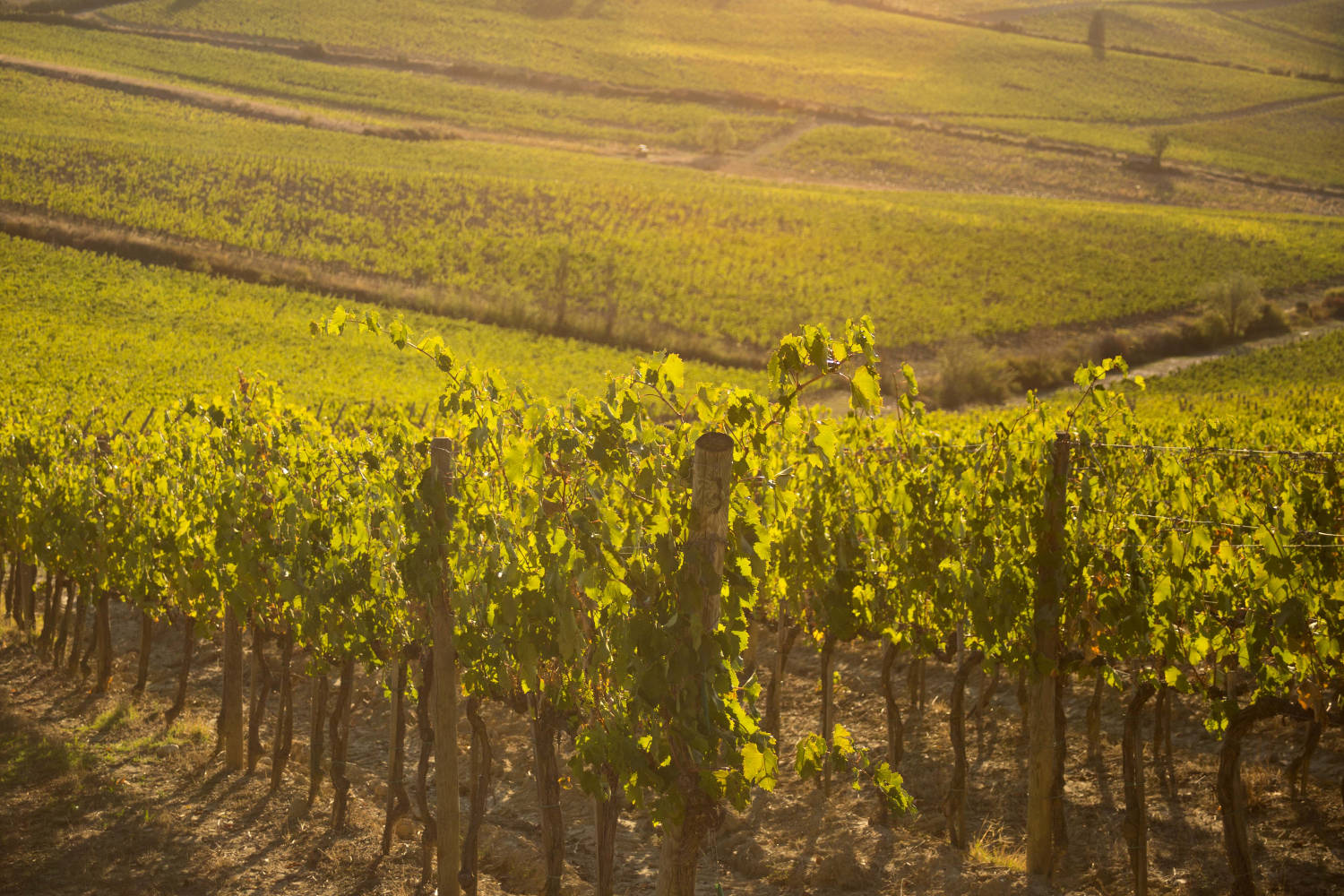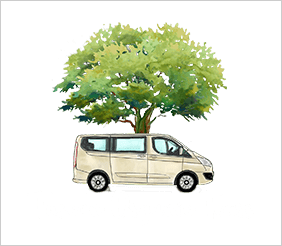The Chianti area, nestled between the cities of Florence and Siena, is a hilly, wooded region enriched by winter rains and natural springs. Despite its stony nature, farmers have successfully grown mainly grapes and olives, creating a natural habitat for indigenous vine varietals such as Sangiovese, Canaiolo and Colorino. This centuries-old tradition births the world-renowned Chianti wine. Super Tuscan wines emerged during a challenging period for Tuscan producers, driven by a desire for renewal. In defiance of restrictive legislation, winemakers disregarded traditional rules, introducing new types of vine and processing techniques. This revolution gave birth to international-inspired wines, marking a transformative era for the whole Tuscan viticulture.
CHIANTI CLASSICO AND SUPER TUSCAN RED WINE TOUR
A wine region with origins that go back more than two thousand years.
WHAT WE WILL DO ON THE CHIANTI CLASSICO AND SUPER TUSCAN WINE TOUR:
FULL DESCRIPTION OF THE CHIANTI CLASSICO AND SUPER TUSCAN WINE TOUR:
The Chianti area was the scene of some very bloody clashes, arising from the eternal rivalry between the cities of Siena and Florence. The area was coveted by the two rival factions, the Papacy and the Empire, which controlled all the towns in medieval Italy. The region was the battlefield of their armies and many mercenary troops. Chianti is still a constellation of small-fortified villages and castles.
It is believed that in this hostile climate, it was the monks within the courtyards of their monasteries –also shielded by protective walls– who were responsible for the growth in wine and olive oil production. They kept the ancient cultural practices alive through the many wars and despite the near-destruction of some indigenous varieties.
Historically, Chianti wine is a blend of different grape varietals, with Sangiovese making up most of the quantity. Most probably, Sangiovese is originally from the mountains of the nearby Emilia-Romagna. It has also grown on the Tuscan hillsides for the past several centuries, long enough to be considered native. It has been renowned since antiquity for its high and constant yield in terms of productivity. One of its interesting traits is that if it is planted in soils with different compositions, it tends to develop new characteristics, with time becoming what can be considered to all intents and purposes a new plant (clone). Sangiovese has today more than fifty approved clones, thus creating myriad organoleptic characteristics that arouse great interest among wine lovers around the world.
The distinctive features of Sangiovese on the palate are its light body, its high concentration of tannins and its marked acidity. This means that wines mostly made from Sangiovese are easy to pair with a variety of dishes, because the wine barely covers the taste of food. Nowadays when we describe a wine, we tend to value acidity levels and to use our scientific knowledge as much as we can to judge its quality, while in the past the situation was very different.
The aim was to soften the aggressive features of the Sangiovese and sweeten it; to do so, winemakers blended the Sangiovese with more robustly-bodied grapes, varieties with more intense colours and fruitier and spicier aromas, such as Canaiolo and Colorino. In addition, since so much wine was drunk, they lowered the alcohol content and increased freshness by adding a small percentage of white grapes like Trebbiano toscano and Malvasia Bianca.
This recipe, accompanied by a profound innovation both agronomic and oenological, was wisely codified by Baron Bettino Ricasoli, who, along with his team of workers and advisors, marked a furrow between the ancient and somewhat obsolete wine-making customs and the more modern and advanced ones.
However the rules that were established after the Second World War to regulate Italian wine production proved to be totally inadequate when taking into account the richness and variety of Italy’s traditional products. They were mainly dictated by the need to satisfy the great surge in consumption that marked that historical period in Italy.
Subsequently, the government approved the introduction of delimited wine areas, called Denominations of Controlled Origin (D.O.C.). Each of them had their own consortium. The consortiums took on the role of controlling and guaranteeing the final quality of the product, a role that they still play.
The geographical area of Chianti acquired the name Chianti Classico to distinguish itself from other wine-producing areas of Chianti, now extending to almost the entire Tuscany region, in the absence, indeed, of a true and proper regulation.
Unfortunately, the situation did not improve much. The general trend was not the pursuit of quality, but of quantity. The geographical regions allowed were almost always too large to reflect the special characteristics of the areas; in addition the minimum quality levels were often set rather low.This state of affairs had particularly negative effects in Chianti, as it contributed to quell the great potential of its lands by encouraging the production of mediocre wines.
The 1980s coincided with a change in mentality among many producers. Besides renewing their knowledge and making profound changes to their businesses, they began to produce wines that ignored the rules established by the consortia. They would work by making the most of the peculiarities of each territory. The hard work began in the vineyards, obtaining high quality grapes but very low yields per hectare. The new techniques used barrels that were different from the traditional ones. The producers gave themselves the maximum freedom to use vines that were not in the rulebook, but which offered reasonable expectations of success.
Thanks to their research and development, always shored up by hefty investments, the producers managed to obtain top quality wines. These Tuscan wines soon became the star wines of the most modern companies, easily surpassing the more traditional wines.
However, the question of certification remains unresolved to this day. As we have already mentioned, traditional wines are subject to scrupulous checks by the various production consortiums. Once the wines have passed all the quality tests, the producers get a permit to bottle and label the wine according to its type. The certificates can be: D.O.C, D.O.C.G., Riserva and Gran Selezione.
Super Tuscan wines, since they are not subject to these control processes, fall into the category of I.G.T. Tuscan wines. There are only two rules fixed for this category: a maximum yield per hectare, and where the grapes originate, which must be limited to the Tuscany region. This category is very extensive and includes low-cost table wines, as well as products placed at the top of the lists of world wines.
In order to make a distinction within this category, in the 1980s, the term Supertuscan was coined. The word was attributed to an American wine expert, whose name is still uncertain.
To date, in the absence of a specific controlling body, producers are not allowed to print this definition on the label. La maggior parte dei Super Tuscan più quotati provengono dalla zona costiera di Bolgheri e dal cuore del Chianti Classico.
The Chianti and Supertuscan wine tour will concentrate solely and exclusively on wine and food, but without forgetting its historical and cultural aspects and of course, the landscape of one of the most beautiful regions of the world. This is a land that has created many artists, poets, explorers and intellectuals; it has inspired their deeds, their artistic expression and their thoughts.



